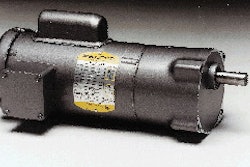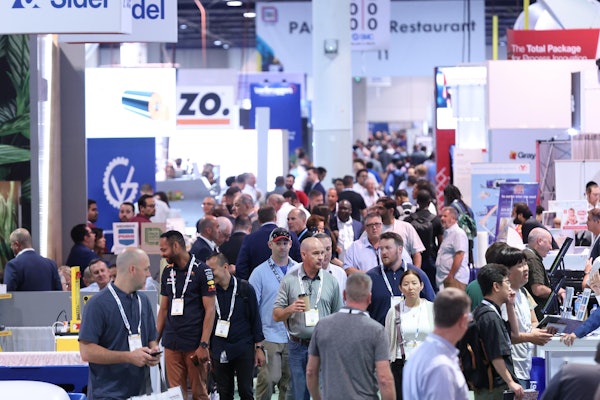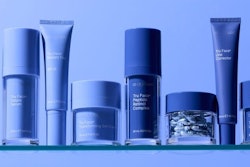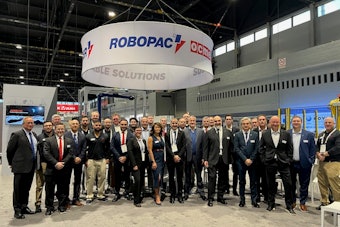Although Nakano Vinegar is a 200-year-old food company with sales of $1.8 billion in Japan, the products of its U.S. subsidiary Nakano Foods Inc. are relatively unknown to Americans. This is despite the fact that it is the largest private-label vinegar bottler in this country (see story on p. 32).
When the company decided to branch out and begin selling bottled salad dressings and soup bases in this country, it wanted to start slowly to test demand. This was accomplished by installing a moderate-volume filling line that started up early last year at its Rancho Cucamonga, CA, plant near Los Angeles. Finished products are sold in Asian communities in such cities as Los Angeles, New York and Chicago.
The core equipment of the new line consists of a pair of Fillit fillers and a Kapit semi-automatic capper, all supplied by DT Kalish (Montreal, Quebec, Canada). "Everything we chose had to be flexible and able to handle a wide range of bottles," says operations manager, bottling, Ed Kluss. This line handles glass and plastic bottles in sizes from 250 mL to 1 L. Filling speeds reach 20 bottles/min for the 250-mL glass bottles. And just because the line is designed for low-speed operation doesn't mean it's labor-intensive. The line requires only five people from uncasing through casing.
The fillers, which rely on positive displacement pumps, easily handle dressings that contain particulates, according to Kluss. They were also modified with stainless steel gears versus Teflon for better heat-resistance to accommodate Nakano's high fill temperatures (the company declined to reveal specific temperatures).
Two-nozzle filling
During Packaging World's visit, Nakano was bottling its Mitsukan brand Yuzu citrus-flavored salad dressing. The line starts out as glass bottles are manually unpacked from reshippers and placed on a slowly rotating accumulation table that feeds a single-file conveyor. Bottles then enter a wire twist that inverts them while a brief air burst blows out any dust. They are returned upright and enter the filling room. Both the filler and capper are housed in a high-sanitation room for extra quality assurance. "Our sanitation procedures are very strict," says Kluss.
The salad dressings are actually filled with two nozzles, one for the body of the salad dressings and the second for the oil. After a sensor detects the presence of bottles, a neck clamp tightens around two bottles at a time to prevent them from moving during the fill.
Next, the two fill nozzles descend 2" into the containers and dispense product in a straight on/off fill. The fill valves themselves are flared outward so that product fills down the inside walls of the bottles to minimize foaming. "We have no problem with foaming whatsoever," confirms Kluss.
After the nozzles complete the fill, they cut off the flow of product and emerge from the containers. Although they're no-drip fill valves, as an extra precaution, any residual oil or dressing is continuously vacuumed away, keeping containers clean. That's done by two tubes, one positioned just in front of each nozzle, that supply a continuous vacuum from a PIAB (Rockland, MA) composite vacuum pump. The small and compact pump was chosen by Nakano for its ability to withstand high temperatures and acidic conditions.
Power-assist capping
Though filling is completely automatic, capping is fairly manual. But it gets a helping hand from the semi-automatic capper. "We don't have the room for an in-line capper, so we use this and it works really well," says Kluss.
The capper could actually be better described as a "power-assist" manual capper. One operator manually places the threaded closures. A second operator tightens the cap with a hand-operated rotary capping chuck. This operator maneuvers the capping head-which is on a pneumatically assisted arm, similar to the arm of a swivel desk lamp-and places it over a bottle. The operator then squeezes the handle of the capping head and it spins until the cap is fully tightened. Caps are never overtightened, says Kluss, thanks to an internal ratcheting mechanism that disengages the internal drive of the capper when it has reached the proper torque.
"The consistency [of cap tightening] is really good," says Kluss. Packages are spot-checked for proper torque several times per shift with a torque tester.
After capping, polyvinyl chloride shrink capsules are manually placed over the cap and neck, after which they're ink-jet date-coded, heat-shrunk, and manually case-packed.
Changeover is infrequent since the line typically runs the same product for the duration of the shift. Kluss says it takes about an hour each morning to change the container size and set up the line, which he doesn't consider especially fast changeover. He does say tools required for changeover are "minimal."
What does the future hold? More of the same, says Kluss. "The philosophy is to start off slow, see how it goes, and introduce new products as we go along." The moderate-volume line will continue to be a valuable tool, allowing Nakano to test new products while avoiding large capital investments until they're warranted.





























